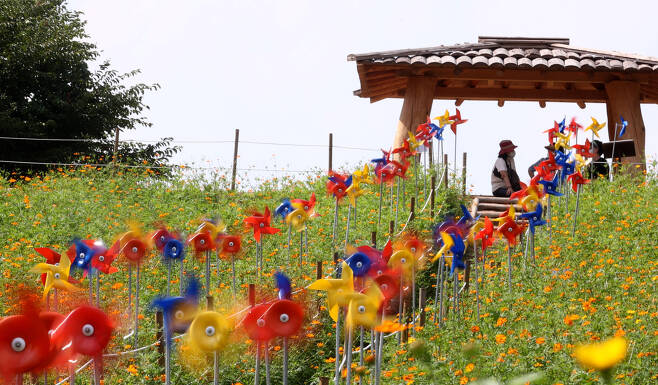Spring flowers bloom earlier, ice freezes later than before: report
이 글자크기로 변경됩니다.
(예시) 가장 빠른 뉴스가 있고 다양한 정보, 쌍방향 소통이 숨쉬는 다음뉴스를 만나보세요. 다음뉴스는 국내외 주요이슈와 실시간 속보, 문화생활 및 다양한 분야의 뉴스를 입체적으로 전달하고 있습니다.

Spring flowers in Korea are blooming earlier while ice is forming increasingly later in the last three decades, a recent report from the Korea Meteorological Administration showed.
The KMA on Tuesday released the latest climatological averages from 1991 to 2020, comparing the data with the previous figures recorded from 1981 to 2010. Used for analyzing changes in the ecosystem over a long period of time, seasonal observation is a study of animals, plants and weather phenomena at the same spot every year.
According to the KMA’s latest climate normals, the blooming date of spring flowers such as plum blossom, forsythia, azaleas, and cherry trees were one to five days earlier than the previous recordings.
Plum blossoms saw the biggest difference from the previous three-decade average, flowering on March 13, five days earlier than the old record.
The report also showed that the first cicada sound was recorded on July 10, at three days earlier.
The KMA said the changes were consistent with the earlier onset of spring and summer brought about by climate change.
On the other hand, the start date of frost and ice moved back three days to Nov. 15 and 16, respectively. This was in line with winter getting shorter, the KMA said.
“Seasonal observation data accumulated for a long time at the same spot is valuable for research on ecosystem changes caused by climate change,” said Lee Sang-hoon, leader of the climate change research team at the National Ecological Center.
“If we can cooperate with ecological and forestry research institutes in the future, in-depth analysis of ecosystem’s various elements, such as food webs and spawning periods, will be possible.”
The entire dataset is available on the KMA’s Weather Data Service website.
By Kan Hyeong-woo(hwkan@heraldcorp.com)
Copyright © 코리아헤럴드. 무단전재 및 재배포 금지.